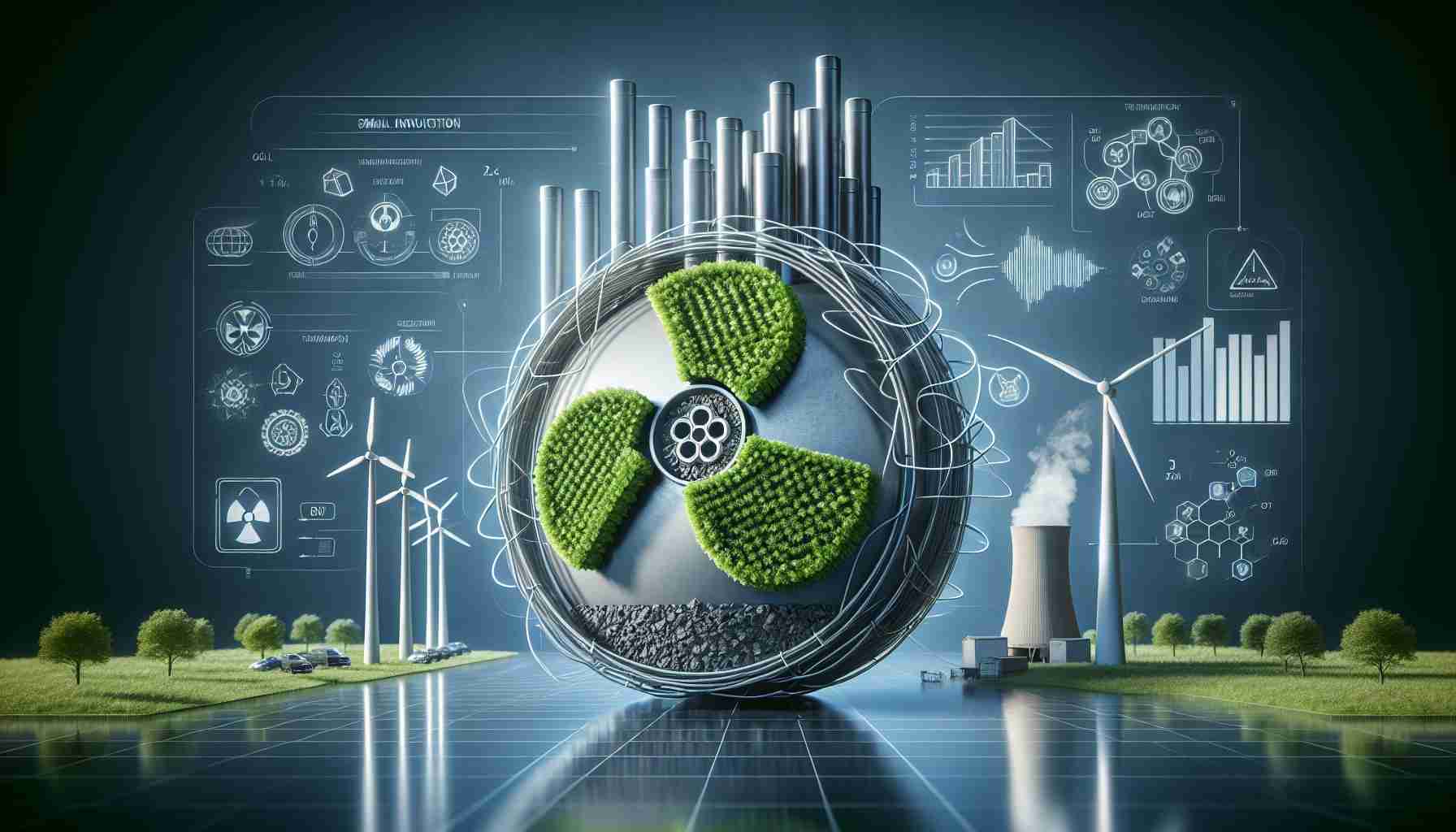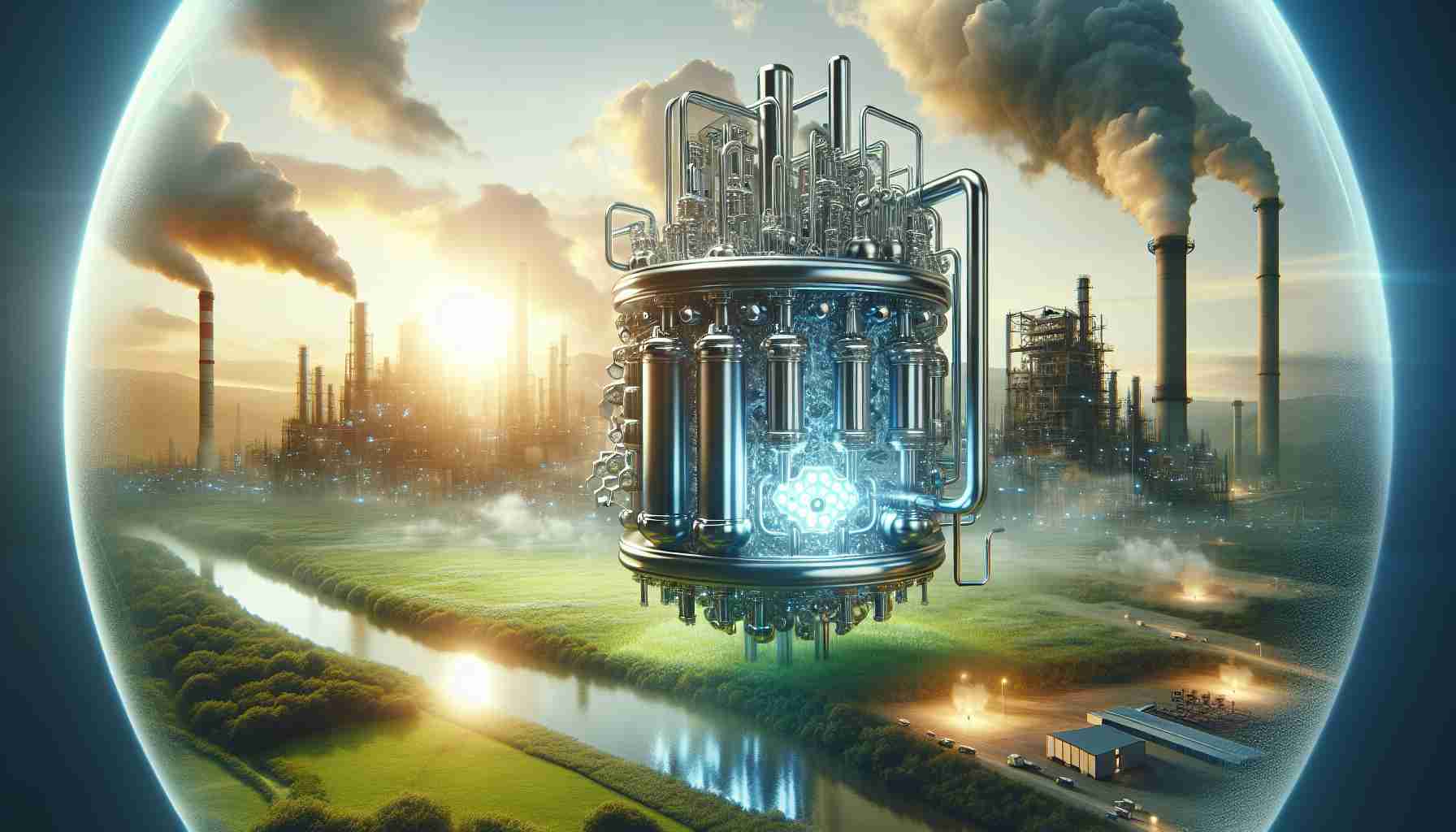The Push for a Sustainable Energy Solution
Recent weeks have seen a surge in discussions surrounding severe weather events, attributed largely to the implications of climate change. Experts underline the pressing need to reduce greenhouse gas emissions, especially as we embrace innovative technology driven by artificial intelligence and expanding data centers, which require significant power supply.
In response to this escalating demand, Small Modular Nuclear Reactors (SMRs) have emerged as a potential alternative. Numerous reports indicate that these compact reactors could become operational by the 2030s, garnering interest from major tech companies. Notable industry giants like Google, Amazon, Microsoft, and Meta have already placed substantial orders for these systems.
This burgeoning sector has attracted an influx of capital, with over 90 distinct SMR designs currently being pitched globally. Governments, particularly in the UK, are actively investing in design competitions and other initiatives to foster innovation in the nuclear space.
However, there remains a significant credibility gap within the SMR landscape. To date, none of the proposed designs have transitioned from concept to reality; prototypes are yet to be constructed, and safety evaluations have not commenced. While the prospects for SMRs are promising, skeptics suggest that the focus should remain on scalable, proven renewable energy solutions that can be implemented more immediately. The future of energy may be complex, but it must also be sustainable and reliable.
The Broader Impact of Sustainable Energy Solutions
The increasing attention to Small Modular Nuclear Reactors (SMRs) is indicative of a larger societal shift towards sustainable energy solutions that address climate change. This transition could redefine the global economic landscape, as nations recognize the urgent need to reduce dependency on fossil fuels. A successful implementation of SMRs could stimulate job creation in engineering, construction, and technical fields, potentially revitalizing certain regions especially those historically tied to coal or oil industries.
Culturally, the rise of nuclear energy presents a pivotal moment for public perception. As communities grapple with the stigma associated with traditional nuclear power—a perceived legacy of catastrophic events—the advent of SMRs, framed as safer and more manageable, could alter consumer attitudes toward nuclear energy. Grassroots movements advocating for clean energy may find a renewed base of support, fostering a culture that prioritizes environmental responsibility.
Environmentally, the implications of adopting SMRs could be profound. These reactors promise lower emissions compared to traditional fossil fuel sources and have a significantly smaller land footprint, minimizing their impact on ecosystems. However, they raise questions about nuclear waste management and long-term sustainability. As countries explore these advanced technologies, the necessity for rigorous safety and environmental assessments will be paramount.
Looking ahead, trends suggest an ever-increasing reliance on diversified energy sources. The combination of SMRs, alongside solar, wind, and other renewables, could prompt a significant reduction in greenhouse gas emissions by 2050, paving the way for a greener, healthier planet. Balancing technological innovation with ecological integrity will be crucial as society navigates this transformative energy landscape.
The Future of Energy: Could Small Modular Nuclear Reactors Be the Game-Changer?
The Push for a Sustainable Energy Solution
As the global conversation intensifies around climate change and its impacts—exemplified by increasingly severe weather events—the urgency to find sustainable energy sources grows more acute. Experts emphasize the necessity of reducing greenhouse gas emissions, particularly as advancements in artificial intelligence and the proliferation of data centers amplify energy demands.
# Overview of Small Modular Nuclear Reactors (SMRs)
In response to this critical energy need, Small Modular Nuclear Reactors (SMRs) have gained traction as a viable alternative energy solution. These compact reactors promise to deliver significant power while being more adaptable to various environments compared to traditional nuclear power plants. With operational projections for the 2030s, the SMR market is stirring considerable interest from major technology firms. Giants such as Google, Amazon, Microsoft, and Meta have already indicated their commitment through substantial orders for SMR technology.
# Current Landscape of SMR Development
The SMR sector has become a hotbed for investment, with over 90 distinct designs currently being proposed worldwide. Governments in regions like the UK are actively championing innovation through design competitions and funding initiatives aimed at accelerating advancements in nuclear technology.
## Pros and Cons of SMRs
Pros:
– Scalability: SMRs can be built in factories and transported to sites, allowing for rapid deployment.
– Reduced Footprint: They require less land compared to traditional reactors, making them suitable for urban and remote areas.
– Enhanced Safety Features: Many designs incorporate advanced safety measures that address common nuclear concerns.
Cons:
– Uncertain Credibility: No operational prototypes have been built, leading to skepticism about their readiness for commercial deployment.
– Regulatory Hurdles: Navigating the safety and regulatory approvals can be a complex and time-consuming process.
– Potential Public Fear: The legacy of nuclear accidents has bred public distrust, which could impede acceptance of SMR technology.
# Innovations and Future Trends
The technological landscape is evolving as research in SMR designs continues. Innovations such as advanced cooling systems and modular construction methods may enhance safety and efficiency, potentially lowering costs over time. As more tech companies and governments pivot towards cleaner energy, the SMR segment is positioned to attract even greater investment and interest.
# Addressing Limitations and Security Aspects
Despite their promise, SMRs still face significant challenges. The transition from concept to reality remains unproven, and comprehensive safety evaluations are critical before progressing to construction. Security aspects, particularly regarding the management of nuclear materials and preventing proliferation, are under scrutiny as these technologies advance. Increased regulatory focus will likely shape how the SMR market develops.
# Sustainability and Market Insights
Sustainability remains at the forefront of energy discussions, and while SMRs offer a potential bridge between nuclear energy and renewable solutions, their introduction must be carefully weighed against existing renewable technologies. Immediate adoption of proven renewable sources such as solar and wind could be essential for achieving short-term climate goals.
# Predictions and Conclusion
In summary, while Small Modular Nuclear Reactors hold promise as a transformative energy solution, the path forward is still fraught with uncertainty. Balancing innovation with established renewable practices is crucial for a sustainable energy future. As the energy landscape evolves, stakeholders must remain vigilant about both the opportunities and challenges presented by SMR technology.
For more insights on sustainable energy and technological advancements, visit energy.gov.
The source of the article is from the blog kunsthuisoaleer.nl


